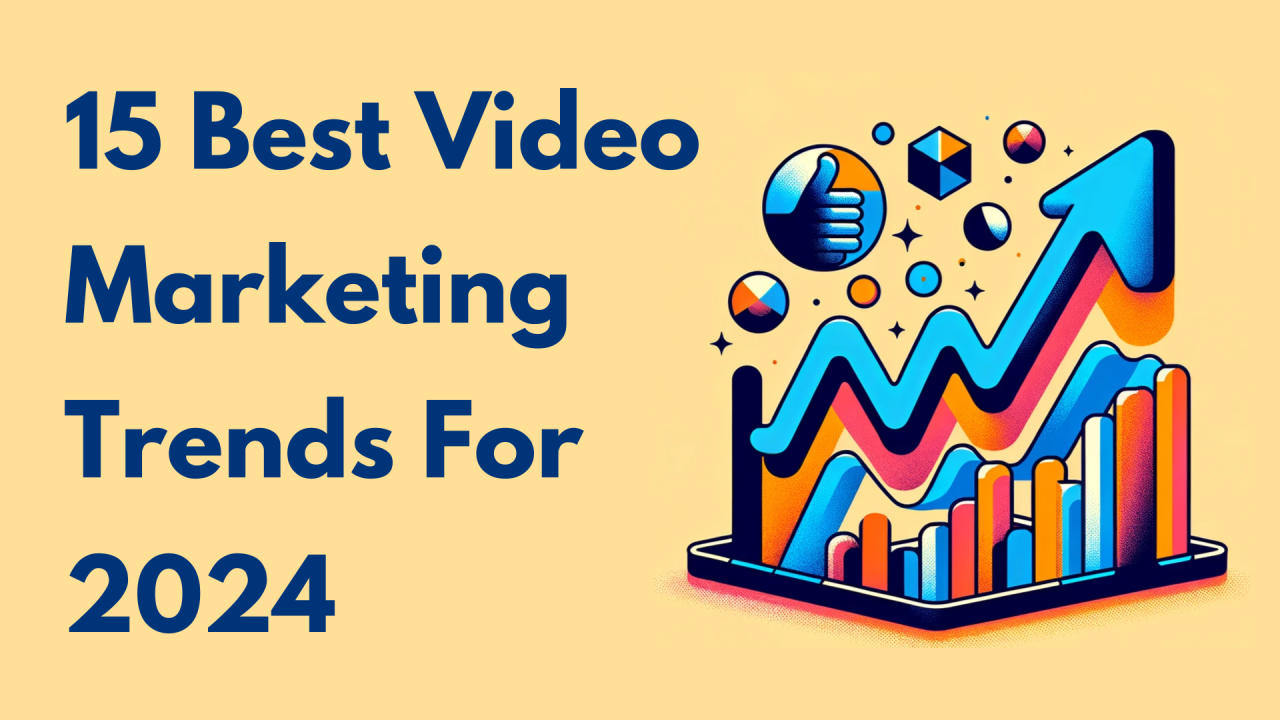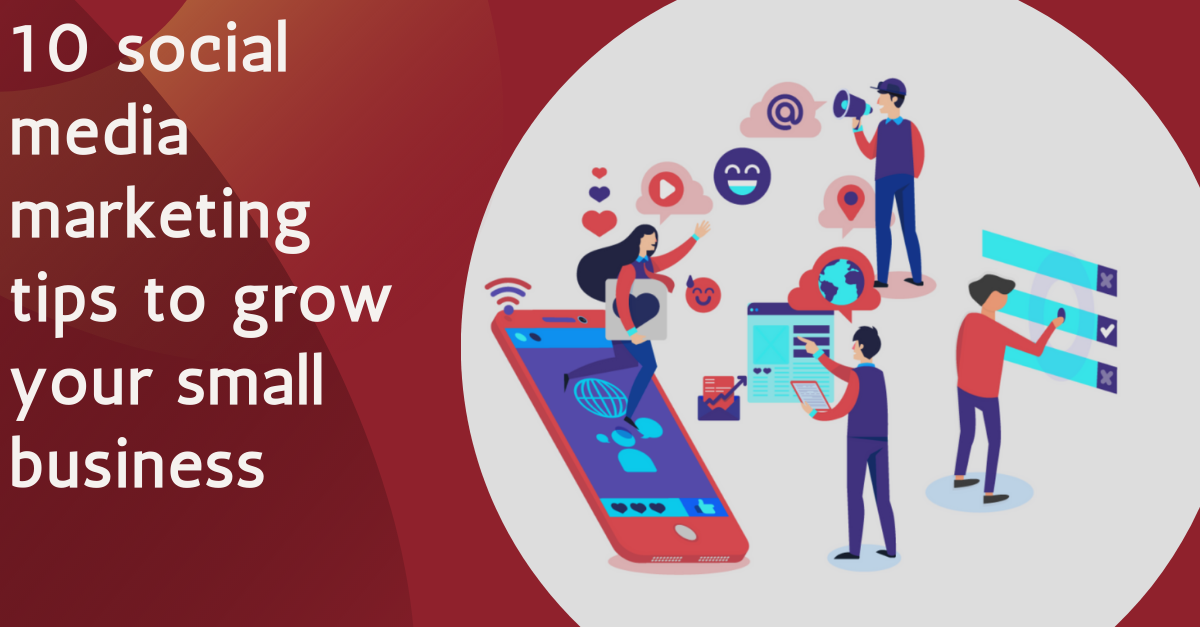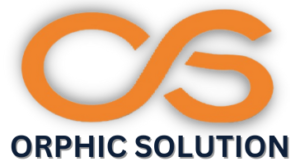Digital Marketing Tips
Video Marketing Trends for 2024: Shaping the Future of Digital Engagement

In the fast-paced world of digital marketing, video continues to reign supreme as one of the most effective mediums for engaging audiences. As we look ahead to 2024, several key trends are poised to shape the landscape of video marketing, presenting exciting opportunities for brands to connect with consumers in innovative ways.
Introduction to Video Marketing
Video marketing involves leveraging video content to promote products, services, or brand messages. Over the years, it has emerged as a powerful tool for businesses to capture attention, convey complex messages, and build emotional connections with their target audience.
Importance of Video Marketing
The significance of video marketing cannot be overstated. Research indicates that video content is more engaging and memorable than text or static images alone. It holds the viewer’s attention longer, resulting in higher retention rates and increased brand recall. Moreover, videos have the ability to evoke emotions and storytelling, making them an ideal medium for brands to humanize their messages and establish meaningful connections with consumers.
Current Landscape of Video Marketing
As we enter 2024, the video marketing landscape is more dynamic and diverse than ever before. Major platforms like YouTube, TikTok, Instagram, and LinkedIn continue to dominate the scene, each catering to different demographics and content preferences. Brands are increasingly investing in video content to enhance their online presence and drive engagement across these platforms.
Emerging Trends in 2024
- Live Streaming
Live streaming is expected to continue its meteoric rise in 2024. Platforms like Twitch, YouTube Live, and Facebook Live enable brands to connect with their audience in real-time, fostering authenticity and interactivity. Live streaming events, product launches, and behind-the-scenes content can help build a loyal community of followers and drive immediate engagement. - Interactive Videos
Interactive videos allow viewers to actively engage with content by making choices or interacting with elements within the video itself. This immersive experience not only captivates audiences but also provides valuable data insights into viewer preferences and behaviour. Interactive videos can be used for storytelling, product demonstrations, and personalized experiences tailored to individual viewers. - Short-form Videos
The popularity of short-form videos is expected to soar in 2024, driven by platforms like TikTok, Instagram Reels, and Snapchat. These bite-sized videos are ideal for capturing attention in today’s fast-paced digital landscape. Brands can leverage short-form videos to deliver quick, impactful messages, showcase products, and participate in viral challenges to increase reach and engagement.- Augmented Reality (AR) Integration
Augmented Reality (AR) is poised to transform video marketing by overlaying digital elements onto the real world. AR-enhanced videos offer immersive experiences, allowing consumers to interact with virtual objects or try products in a simulated environment. Brands can use AR to create interactive product demos, virtual try-ons, and gamified experiences that drive engagement and boost conversions. - E-commerce Integration
Video marketing and e-commerce integration will continue to evolve in 2024. Shoppable videos enable viewers to make purchases directly from the video content, eliminating friction in the buyer’s journey. From interactive product showcases to in-video checkout options, e-commerce integration within videos streamlines the path to purchase and enhances the overall shopping experience.
Innovative Content Strategies
- User-Generated Content (UGC)
User-generated content (UGC) will remain a cornerstone of video marketing strategies in 2024. Brands can leverage UGC to build authenticity, foster community engagement, and amplify brand reach through customer testimonials, reviews, and user-generated stories. Encouraging user participation and showcasing real-life experiences can create powerful connections with audiences. - Storytelling and Brand Narratives
Effective storytelling will continue to drive successful video marketing campaigns in 2024. Brands that can weave compelling narratives around their products or values will resonate emotionally with viewers, fostering brand loyalty and affinity. Authentic storytelling humanizes brands, making them more relatable and memorable in the eyes of consumers.
Technological Advancements
- AI and Machine Learning in Video Marketing
AI and machine learning technologies will play an increasingly integral role in video marketing strategies. These technologies can analyze vast amounts of data to optimize video content, personalize recommendations, and automate video creation processes. AI-powered tools can enhance targeting precision, improve content relevance, and streamline video production workflows for maximum efficiency. - Personalization and Targeting
Personalized video experiences will become the norm in 2024. Brands can leverage AI-driven insights to deliver tailored content based on individual preferences, behaviours, and demographics. Personalization enhances viewer engagement, improves conversion rates, and strengthens brand loyalty by delivering relevant and timely messages to each viewer.
SEO and Video Optimization
Optimizing videos for search engines will continue to be critical for maximising visibility and reach. In 2024, brands will focus on strategic video SEO tactics, including:
Keyword Optimization: Incorporating relevant keywords in video titles, descriptions, and tags to improve discoverability.
Video Transcriptions: Providing accurate transcriptions of video content to enhance accessibility and facilitate search engine indexing.
Metadata Optimization: Optimizing video metadata, such as thumbnails, captions, and file names, to improve ranking and click-through rates.
Social Media Platforms and Video Marketing
Different social media platforms will require tailored video marketing strategies in 2024:
Instagram: Visual storytelling and aesthetically pleasing content.
YouTube: Longer-form, informative content optimized for search.
TikTok: Creative and entertaining short-form videos.
LinkedIn: Professional and educational videos targeting B2B audiences.
Metrics and Analytics
Measuring the effectiveness of video marketing campaigns will be essential in 2024. Key performance indicators (KPIs) to monitor include:
View Count: Total number of views.
Engagement Rate: Likes, comments, and shares.
Conversion Rate: Number of viewers who take desired actions (e.g., sign-ups, purchases).
Watch Time: Total duration viewers watch the video.
Challenges and Solutions
Despite the promising outlook, video marketers will face several challenges in 2024:
- Content Overload
The sheer volume of video content can lead to content saturation and increased competition for viewer attention. To stand out, brands must focus on creativity, authenticity, and delivering unique value propositions.- Attention Span Management
Shortening attention spans pose a challenge for video marketers. Creating concise, compelling content that captures attention within the first few seconds is essential to retaining viewer interest and maximizing engagement.
Future Predictions in Video Marketing
Looking ahead, the future of video marketing is bright. Innovations such as virtual reality (VR) experiences, hyper-personalized content, and seamless integration with emerging technologies will redefine how brands connect with consumers in the digital age. Video will continue to evolve as a primary communication tool, driving engagement, fostering relationships, and influencing consumer behaviors on a global scale.
Conclusion
In conclusion, the year 2024 promises to be an exciting time for video marketing, with emerging trends reshaping the way brands engage with audiences online. By embracing innovative technologies, personalized strategies, and compelling storytelling, businesses can stay ahead of the curve
Blog
7 Proven Techniques of the Best Digital Marketing Company in Bhopal

Today, there is no question that digital marketing is not a choice but rather a must. Whether you run a small local shop or a big national company, your online presence is crucial.
The top digital marketing agencies in Bhopal apply a combination of tactics including seo, social media marketing, web development and paid advertising in order to greatly grow your business.
In this post, we highlight 7 key strategies top digital agencies implement to drive traffic, gain leads and sales for local businesses in Bhopal.

Importance of Digital Marketing for in Bhopal Businesses
Bhopal is an evolving market and it’s completely dependent on internet surfing to let people make purchases. Whether it’s restaurant meals or real estate, customers go online for information before making purchases.
A good marketing agency in Bhopal can assist your business:
SEO and Social Media Optimization for more online visibility
Generate leads with targeted PPC ads Create qualified leads through PPC ads that are targeted to promote your firm for the services important to business owners.
Establish trust and authority through epic content
Personalize campaigns for a local market, so that your marketing is more relevant
Example:
A local restaurant making smart choices online can rank in “near me” searches, drive foot traffic and ramp up its online orders thanks to Google and Instagram ads.
Develop an Effective Digital Marketing Strategy
Every winning campaign begins with a detailed, actionable plan.
Your strategy should include:
Market research and competitor analysis
Knowing your audience and their needs
Selecting appropriate marketing channels (SEO, social media, PPC, etc.
Establishing Goals and KPIs to define success
Pro Tip:
Begin with organic marketing including SEO and social media. When you get the ball rolling, invest in some PPC advertising for quicker results.
Smart SEO with Latest Updates
SEO is the lifeblood of digital expansion. One of the best SEO companies in Bhopal has been working on following three factors.
On-page SEO: It relates to all factors on your own website which can be optimised for search engines like google, including content, meta tags and internal hyperlink building.
Off-page SEO: Generating quality backlinks and citations for local business
Technical SEO: Increasing speed, mobile responsiveness and site structure.
The ability of your site to evolve and avoid getting penalised is determined by its keep-it-fresh score, not the arbitrary date you published it.
Example Keyword Use:
“Our team stays up to date with the most recent SEO changes to help our clients rank and maintain their rankings over time.”
High-Performing Website Design & Development
Your website is essentially your digital shop front. Slow or poorly designed, potential customers will go elsewhere.
What A web design company in Bhopal does?
Mobile-friendly, responsive designs
Pages load in less than 3 seconds
SEO-friendly structure and clean coding
Clean and tidy navigation with strong CTA buttons
A web development company in Bhopal, on the other hand, makes sure your website is secure and scalable along with incorporated analytics to track well.
Internal Linking Tip:
Link this to your web development service page for stronger SEO.
Social Media Marketing That Engages
Social media isn’t just about posting images-it’s also a place to connect with your audience.
An effective social media marketing strategy consists of:
Interactive material such as reels, videos and infographics
Consistent posting schedules
Utilize local hashtags and trending topics.
Creating paid advertisements for targeted exposure
Example:
A Bhopal-based apparel brand saw sales take a 45% jump after posting Instagram ads and tied up with local influencers.
Focused PPC Campaigns for Immediate Effects
PPC advertising is all about getting immediate exposure and instant results when done right.
The top agencies use to advertise by PPC:
Google Ads for search-driven traffic
Facebook & Instagram Ads for local targeting
LinkedIn Ads for B2B businesses
Benefits of PPC:
Instant traffic and visibility
Better audience targeting
Easy tracking and measurable ROI
Internal Linking Tip:
For more details, link to your PPC service page.
Tactic 6 – Always Blog And Create Content Old but new, this takes people away.
Your content is what helps you build that trust and get established as an authority in your niche.
Top agencies focus on:
Blogs that highlight response to customer questions on a weekly basis
Local seo content for bhopal audiences. 2019 hsn code list city wise searchable pdf and excel file.
Educational resources to nurture leads
Example Blog Topics:
24 SEO Updates Every Business Owner Should Know
Why to Join Web Development Classes in Bhopal? Opportunities on Your Career”
Top Small Business Digital Marketing Trends
Follow Data to Analyze and Improve
Digital marketing is not a one-time job. You must monitor your progress and optimize incessantly.
You can do this through tools such as Google Analytics and Search Console:
Monitor traffic and conversions
Identify underperforming pages
Modify tactics according to the facts
Pro Tip:
Weekly review of analytics with small, steady changes.
FAQs
Q1. What would you need a digital marketing company in Bhopal?
Local agencies simply know the market, competition, how customers behave better and that gives you a definite edge.
Q2. How frequently should I be updating my SEO strategy?
No less than 4 times per year or after significant Google algorithm changes.
Q3. What is more effective: SEO or PPC?
SEO is for sustainable growth, PPC is providing instant results. A mix of both is ideal.
Q4. What are the best in digital marketing topics to study?
SEO, social, PPC, content and analytics.
Conclusion & Call to Action
Developing an effective internet presence is hard – it takes a lot of time, consistency and knowhow. With these seven strategies, your business can differentiate itself and grow at a faster pace than that of the competition.
Final Tip:
Collaborate with a reliable digital marketing agency in Bhopal to receive professional advice and measurable results.
Ready to grow your business?
Reach out to Orphic Solution now for a free SEO analysis and consultation.
Blog
Top 10 Social Media Marketing Tips to Grow Your Brand

Growing your brand on social media can seem challenging, but with the right strategies, it can be a rewarding experience. Here are ten effective social media tips to help you boost brand awareness and engagement.
1. Define Your Goals
The first step in social media marketing strategies is to define your goals. Are you looking to grow your brand on social media, increase engagement, or drive sales? Clear goals will guide your content and strategy.
2. Know Your Audience
Understanding your target audience is crucial. Use social media analytics tools to learn more about your followers’ demographics, interests, and behaviors. This knowledge will help you create content that resonates and boosts brand awareness on social media.
3. Create Engaging Content
Content is king in social media marketing. Focus on creating high-quality, engaging content that adds value to your audience. Use a mix of videos, images, and articles to keep your feed interesting. Effective social media tips include using storytelling to connect with your audience emotionally.
4. Use Hashtags Wisely
Hashtags can significantly increase your reach on platforms like Instagram and Twitter. Research and use relevant hashtags to get your posts seen by a larger audience. Social media growth hacks often include using trending and niche-specific hashtags.
5. Post Consistently
Consistency is key in social media marketing strategies. Create a content calendar to schedule your posts in advance. Regular posting keeps your audience engaged and helps in increasing social media followers.
6. Engage with Your Audience
Interaction is essential for building a loyal community. Respond to comments, messages, and mentions promptly. Social media engagement tips include running polls, Q&A sessions, and live videos to interact directly with your followers.
7. Collaborate with Influencers
Influencer marketing can give your brand a significant boost. Collaborate with influencers who align with your brand values and have a substantial following. This can help in growing your brand on social media and reaching new audiences.
8. Leverage Paid Advertising
Social media advertising tips suggest using paid ads to reach a broader audience. Platforms like Facebook and Instagram offer detailed targeting options to ensure your ads reach the right people. Invest in social media ads to boost brand awareness and drive traffic to your site.
9. Analyze and Adjust
Regularly analyze your social media performance using tools like Google Analytics and native platform insights. Understanding what works and what doesn’t is crucial for refining your social media marketing strategies. Adjust your tactics based on your findings to improve your results.
10. Stay Updated with Trends
Social media is constantly evolving. Stay updated with the latest trends and platform updates to keep your strategy relevant. Follow industry blogs and influencers to get the latest social media growth hacks and effective social media tips.
Conclusion
Implementing these social media best practices will help you grow your brand on social media. Remember, the key is to be consistent, engage with your audience, and continuously refine your strategy based on data and trends. Happy marketing!
By incorporating these strategies, you’ll be well on your way to mastering social media marketing and seeing tangible growth for your brand.
Blog
10 Effective Ways to Use Analytics to Drive Marketing Decisions
In today’s competitive landscape, data-driven marketing is essential for making informed decisions and optimizing campaigns. Utilizing marketing analytics tools can provide valuable insights and help you improve your strategies. Here are ten effective ways to use analytics to drive your marketing decisions.
1. Leverage Customer Insights

Understanding your customers is crucial for crafting targeted marketing campaigns. Analytics tools can provide deep customer insights, such as demographics, behavior patterns, and preferences. By analyzing this data, you can tailor your messages and offers to meet their needs, enhancing engagement and satisfaction.
2. Optimize Conversion Rates
Conversion rate optimization (CRO) is about increasing the percentage of visitors who complete a desired action on your website. Use analytics to identify bottlenecks in your conversion funnel and test different elements to see what works best. Tools like Google Analytics offer insights into user behavior, helping you make data-driven decisions to improve conversions.
3. Utilize Google Analytics Tips
Google Analytics is a powerful tool for tracking and analyzing website traffic. To get the most out of it, follow some essential Google Analytics tips, such as setting up goals, using custom reports, and analyzing user flow. These practices can help you understand how visitors interact with your site and identify areas for improvement.
4. Conduct In-Depth Data Analysis in Marketing
Performing thorough data analysis in marketing allows you to uncover trends, patterns, and insights that can inform your strategy. Use marketing analytics tools to collect and analyze data from various sources, such as social media, email campaigns, and website traffic. This comprehensive approach enables you to make informed decisions based on real data.
5. Track Marketing Performance Metrics
Tracking marketing performance metrics is essential for measuring the success of your campaigns. Key metrics include click-through rates (CTR), conversion rates, and customer acquisition costs. By regularly monitoring these metrics, you can identify what’s working and what needs adjustment, ensuring your campaigns are effective and efficient.
6. Implement Audience Segmentation
Audience segmentation involves dividing your target audience into distinct groups based on specific criteria, such as demographics, behavior, or preferences. Use analytics to identify these segments and tailor your marketing efforts to each group. This approach can lead to more personalized and relevant campaigns, improving engagement and conversion rates.
7. Focus on ROI Tracking
Return on investment (ROI) tracking is critical for understanding the financial impact of your marketing efforts. Use analytics tools to measure the ROI of different campaigns and channels. This information helps you allocate resources more effectively and focus on strategies that deliver the highest returns.
8. Utilize Predictive Analytics in Marketing
Predictive analytics in marketing involves using historical data and machine learning algorithms to forecast future trends and behaviors. This approach can help you anticipate customer needs, optimize inventory, and plan marketing campaigns more effectively. By leveraging predictive analytics, you can stay ahead of the competition and make proactive decisions.
9. Enhance Marketing Campaigns with A/B Testing
A/B testing is a method of comparing two versions of a marketing asset to see which one performs better. Use analytics to track the performance of different elements, such as headlines, images, or call-to-action buttons. This data-driven approach allows you to make informed decisions about what works best for your audience.
10. Integrate Data from Multiple Sources
To get a complete picture of your marketing performance, integrate data from various sources, such as social media, email marketing, and web analytics. Marketing analytics tools can help you consolidate this data and provide a holistic view of your campaigns. This comprehensive approach enables you to make more informed decisions and optimize your overall strategy.
By implementing these ten effective ways to use analytics, you can drive better marketing decisions, optimize your campaigns, and achieve greater success. Embrace data-driven marketing and leverage the power of marketing analytics tools to stay ahead in the competitive landscape.






